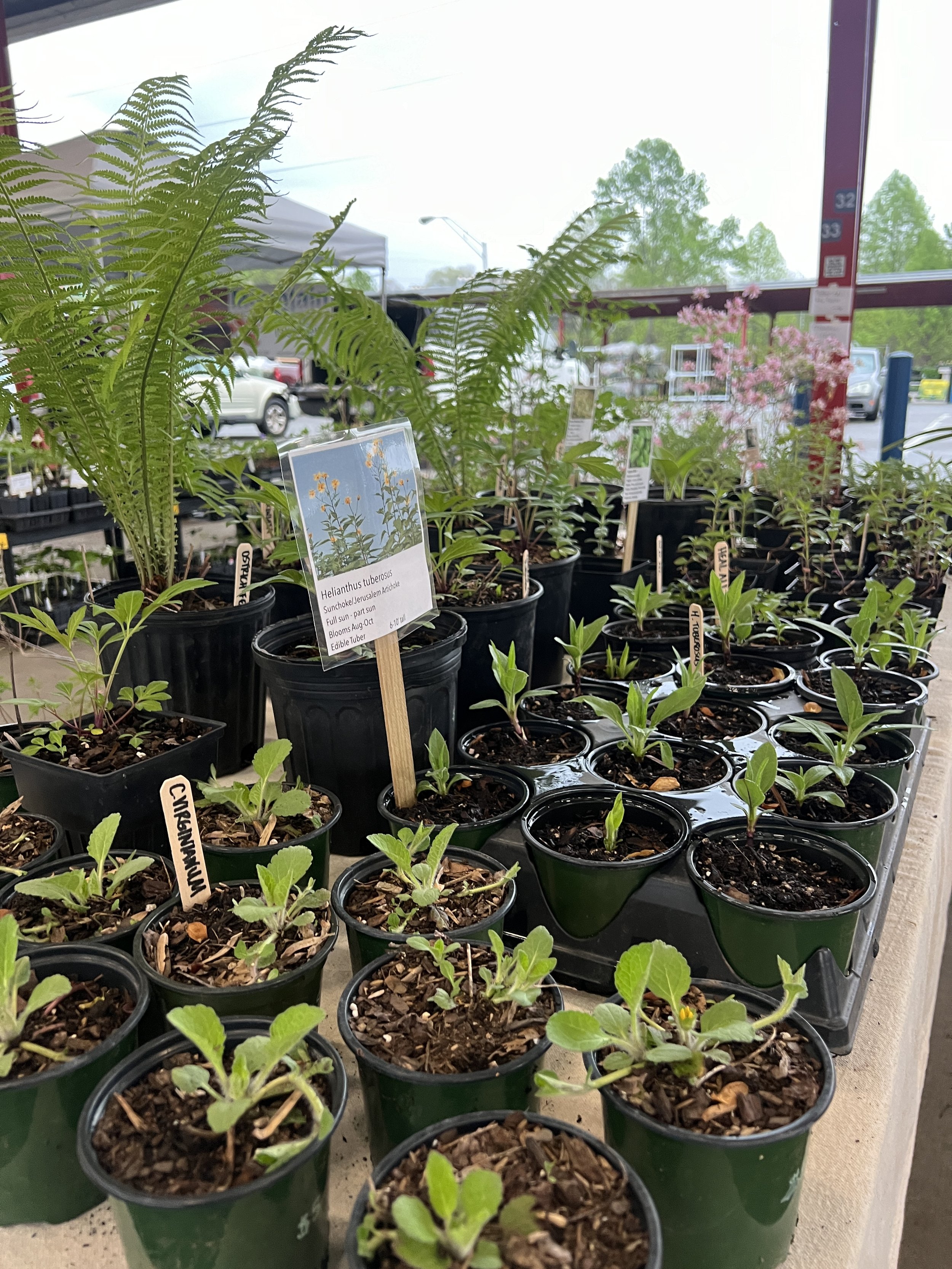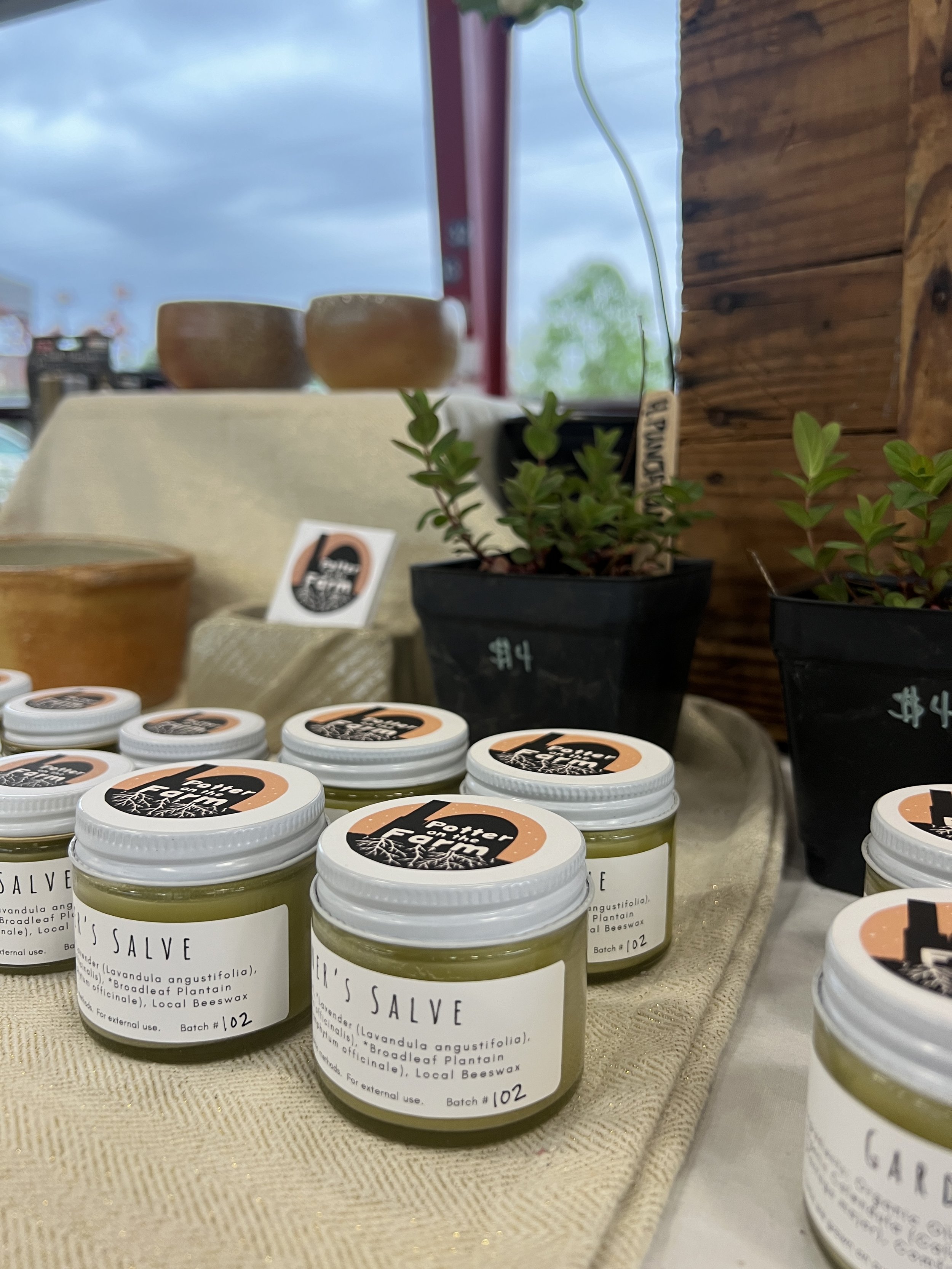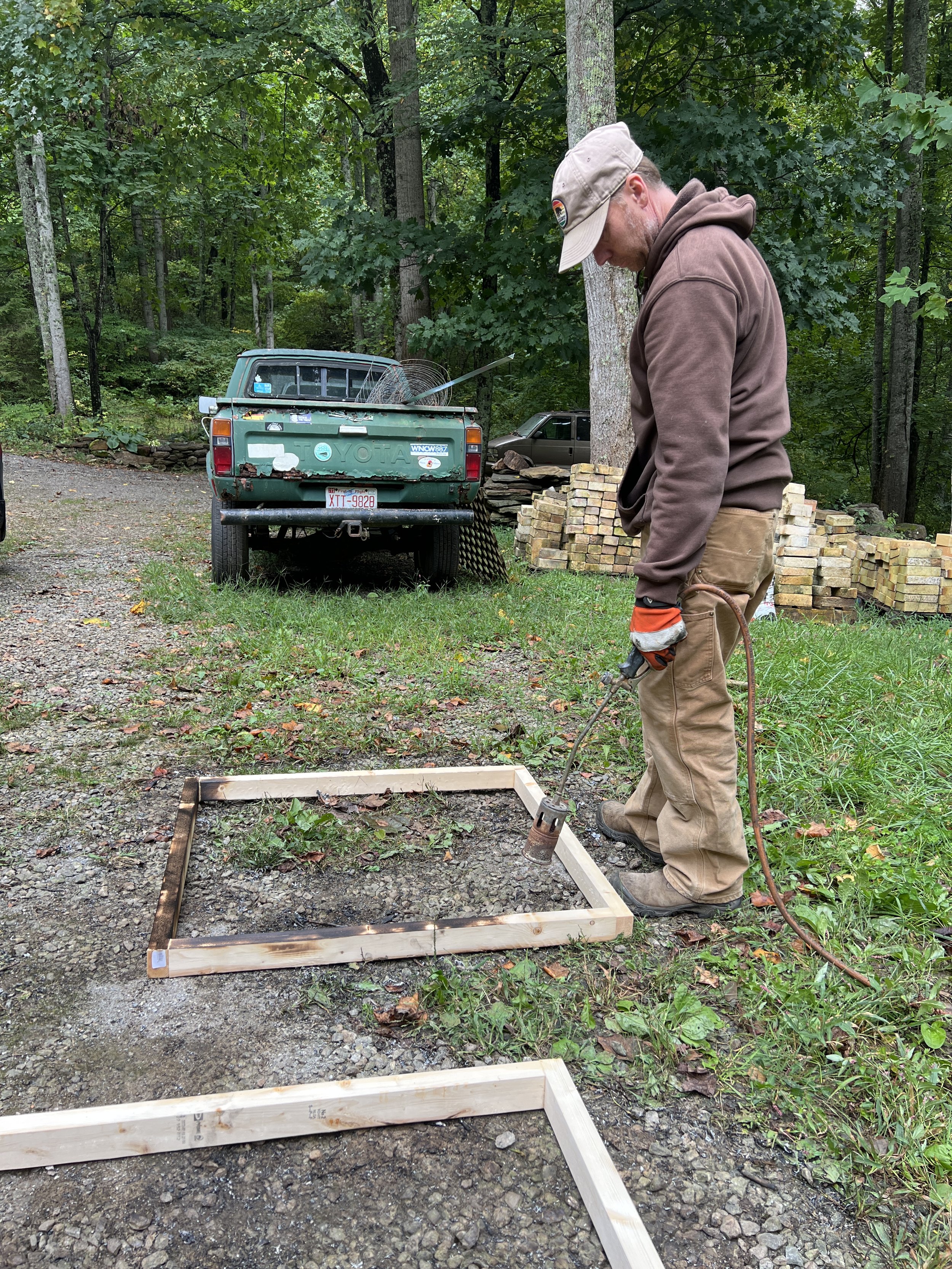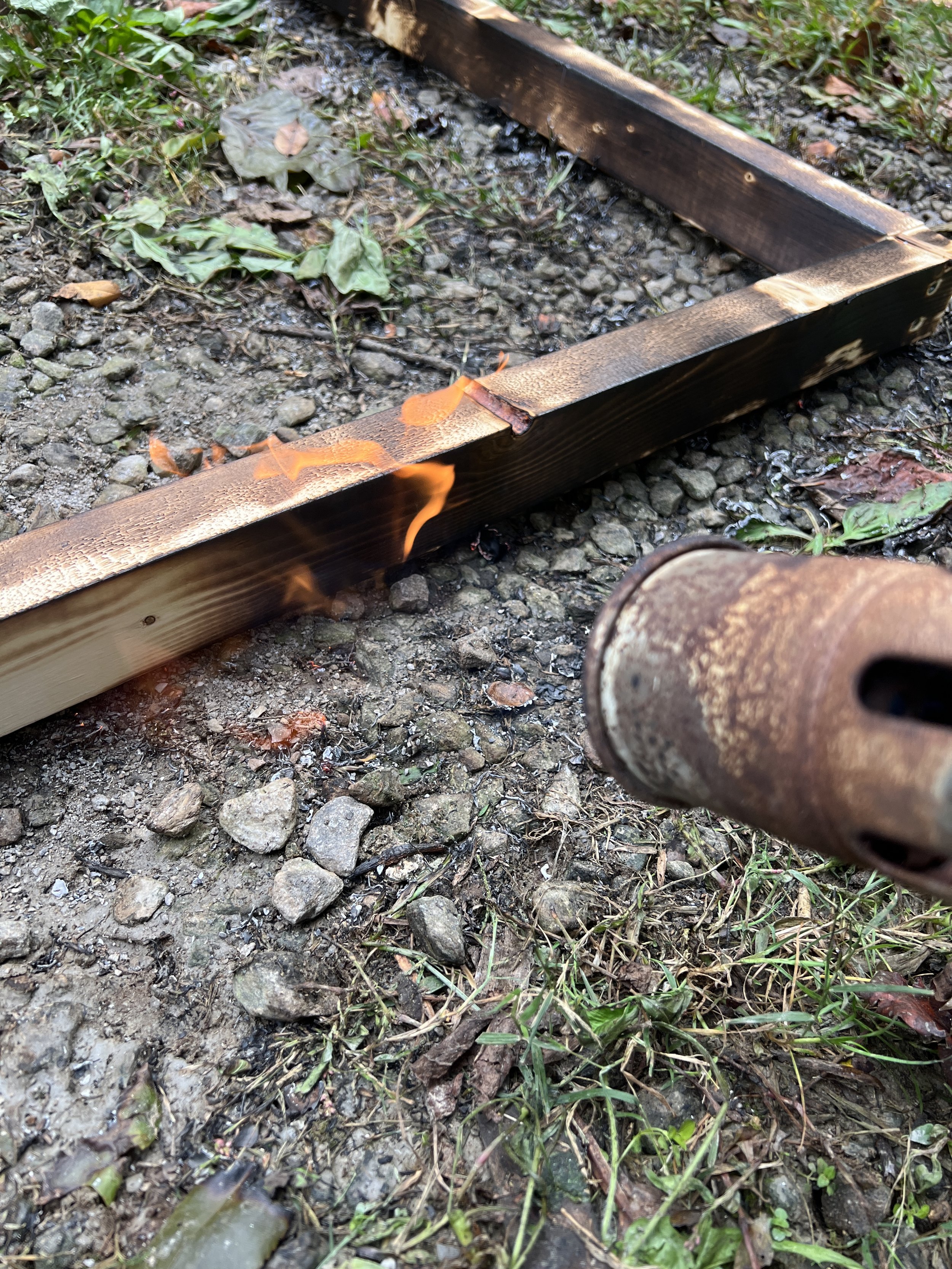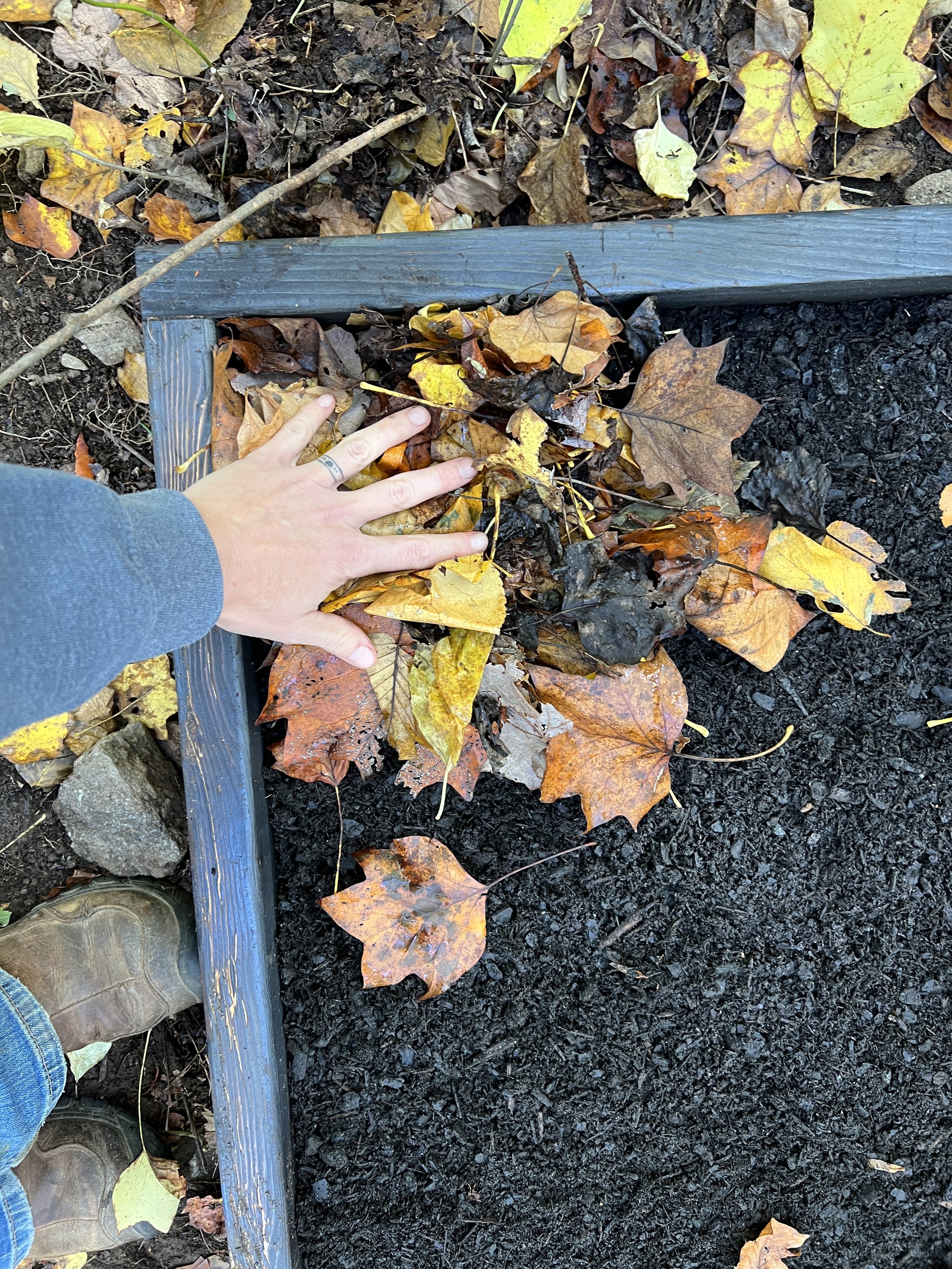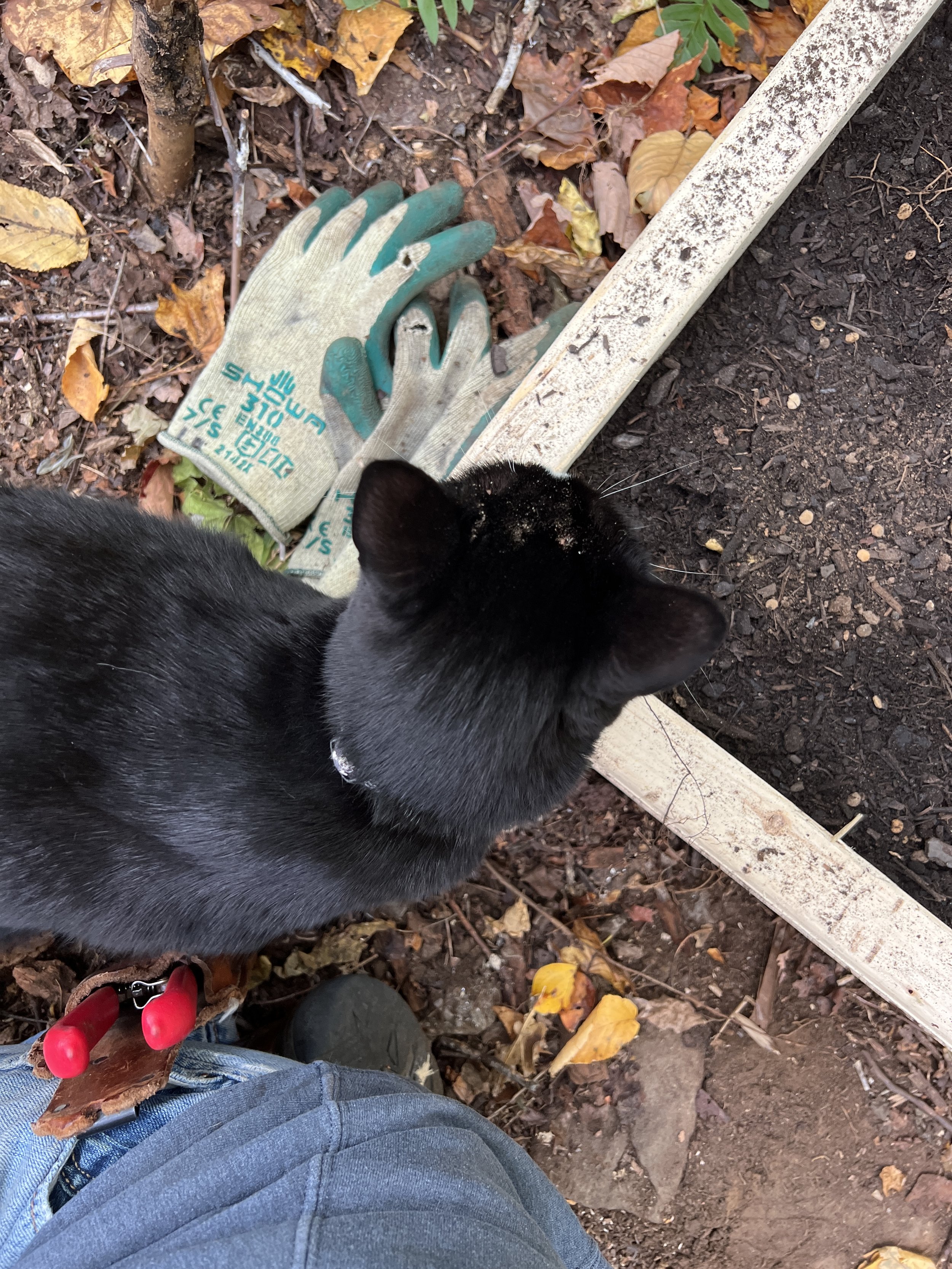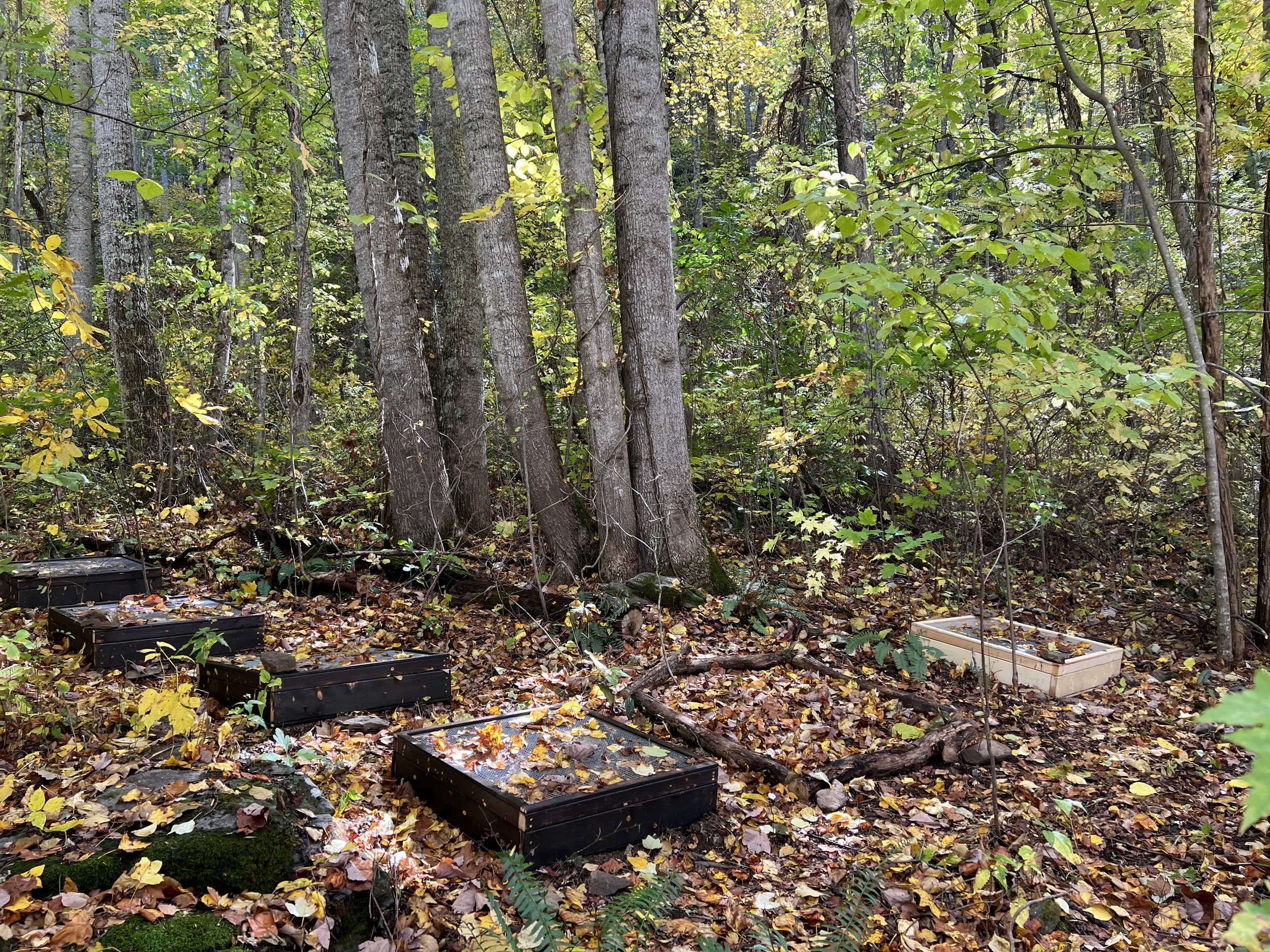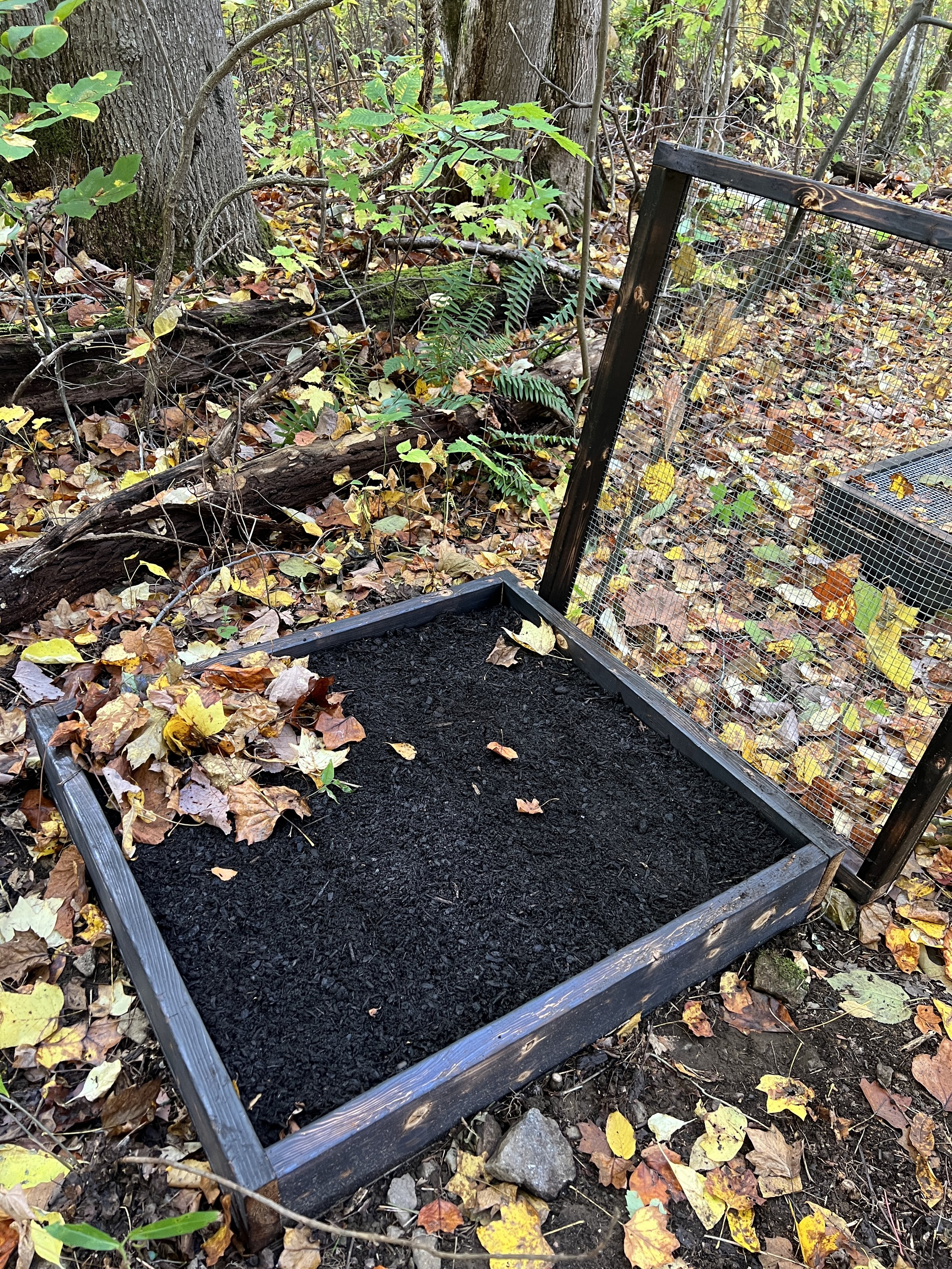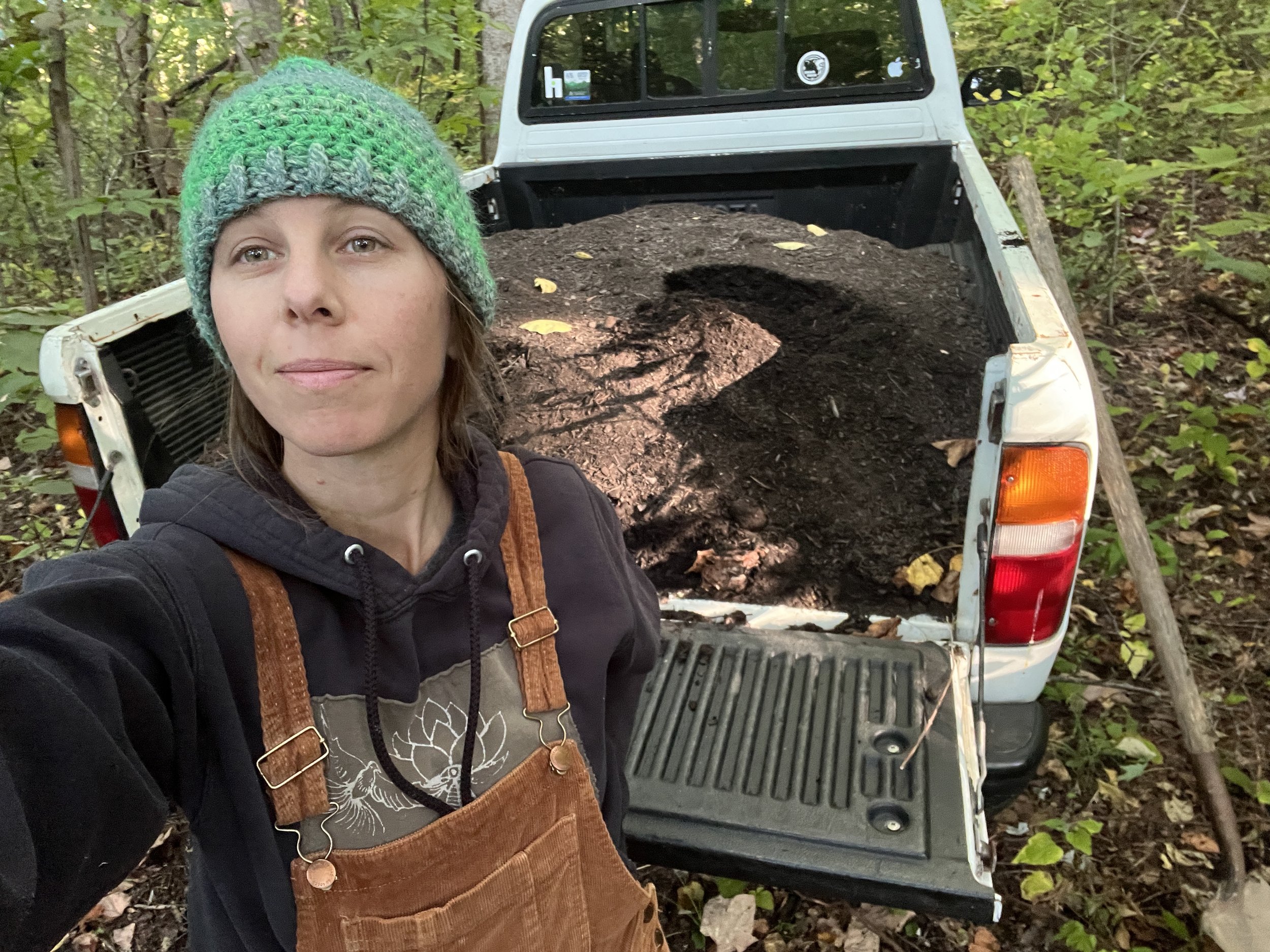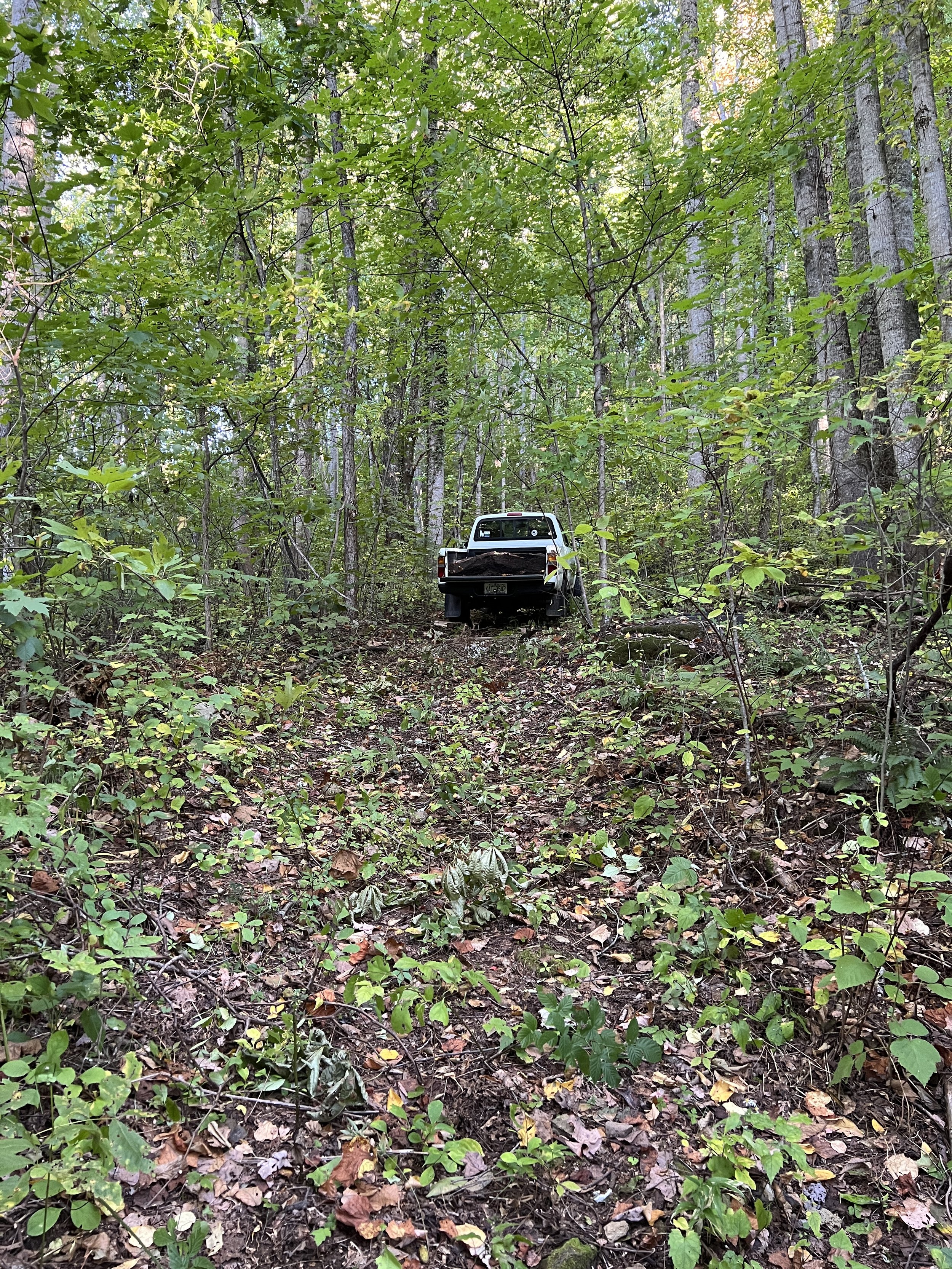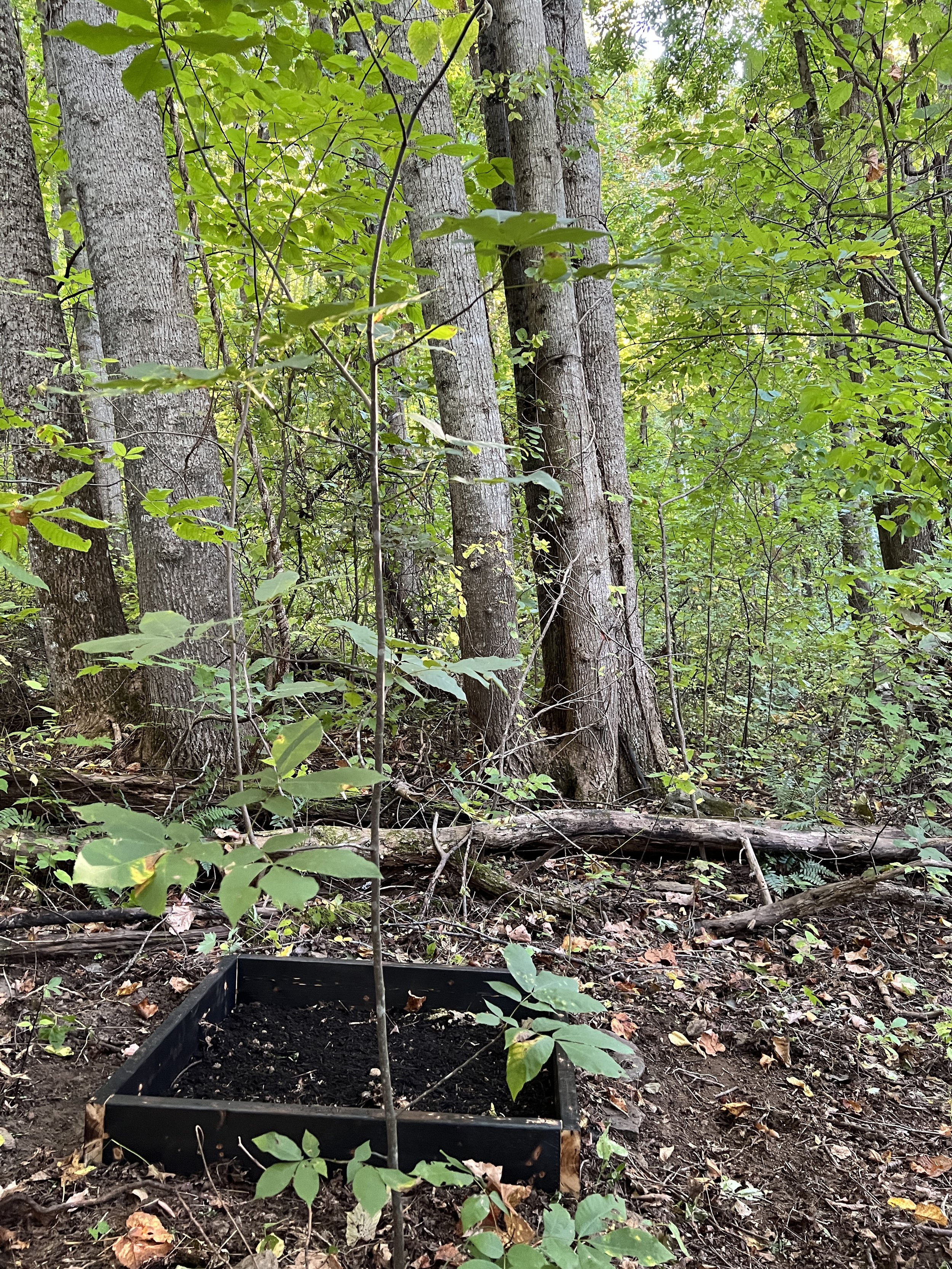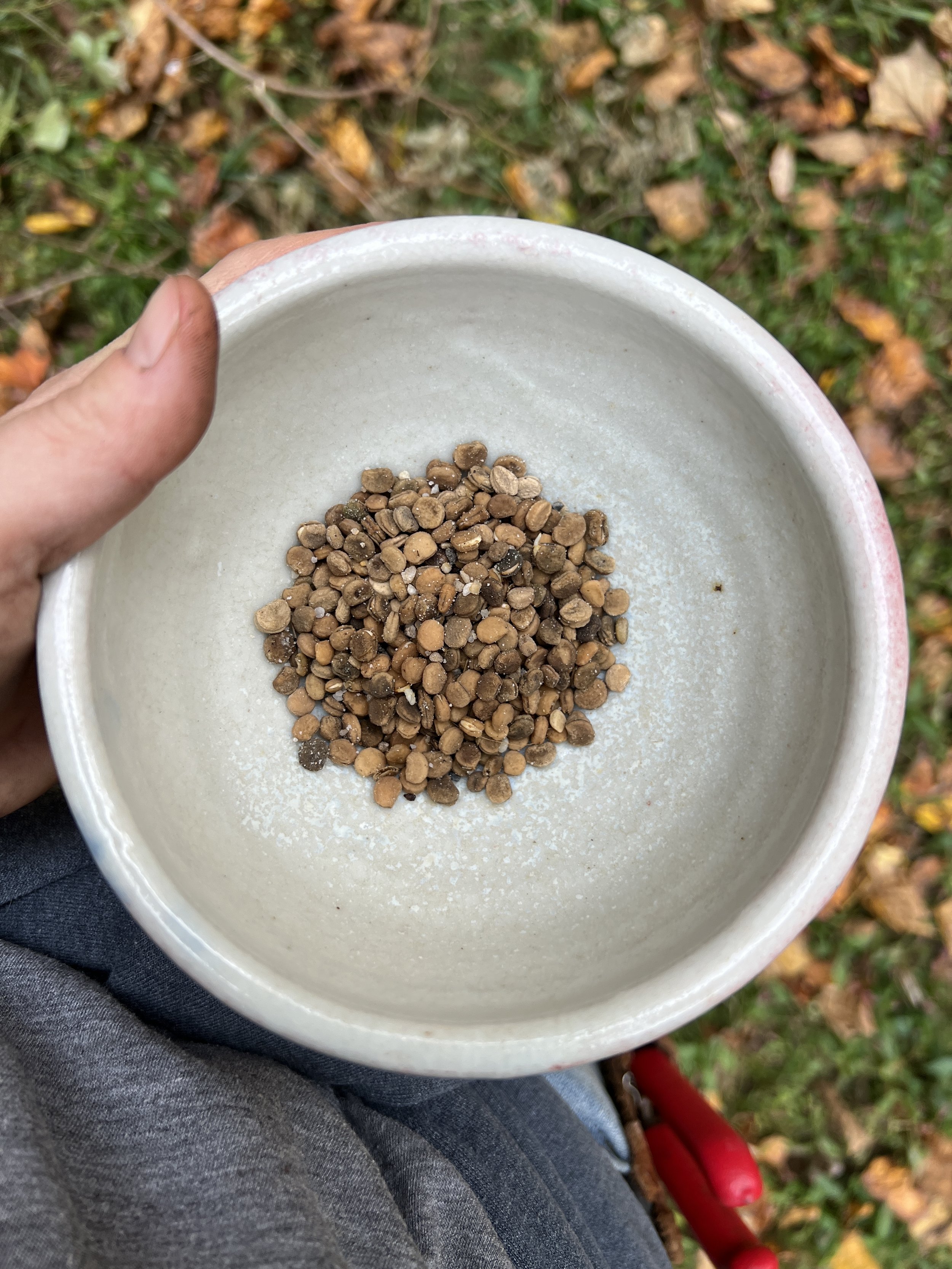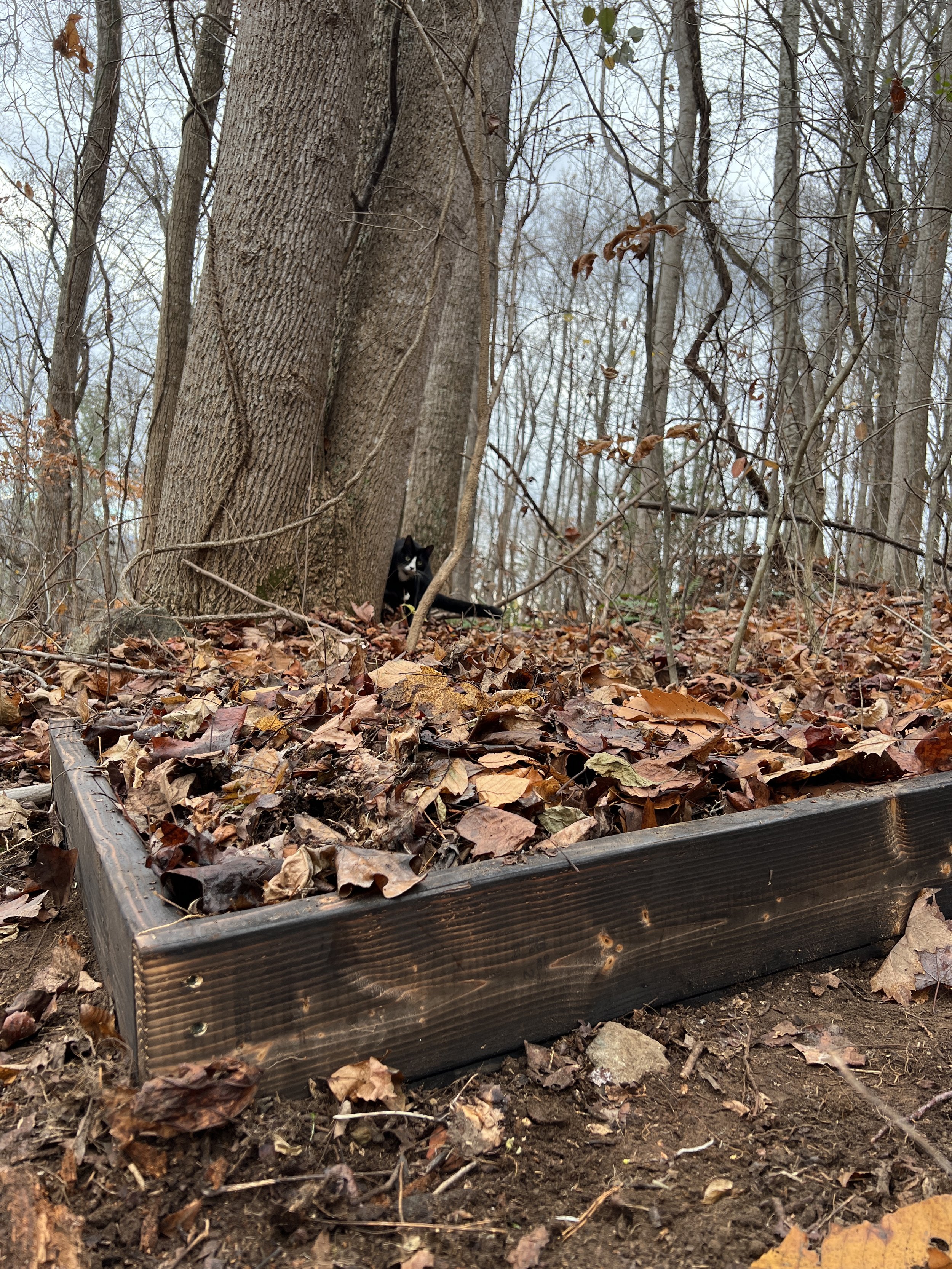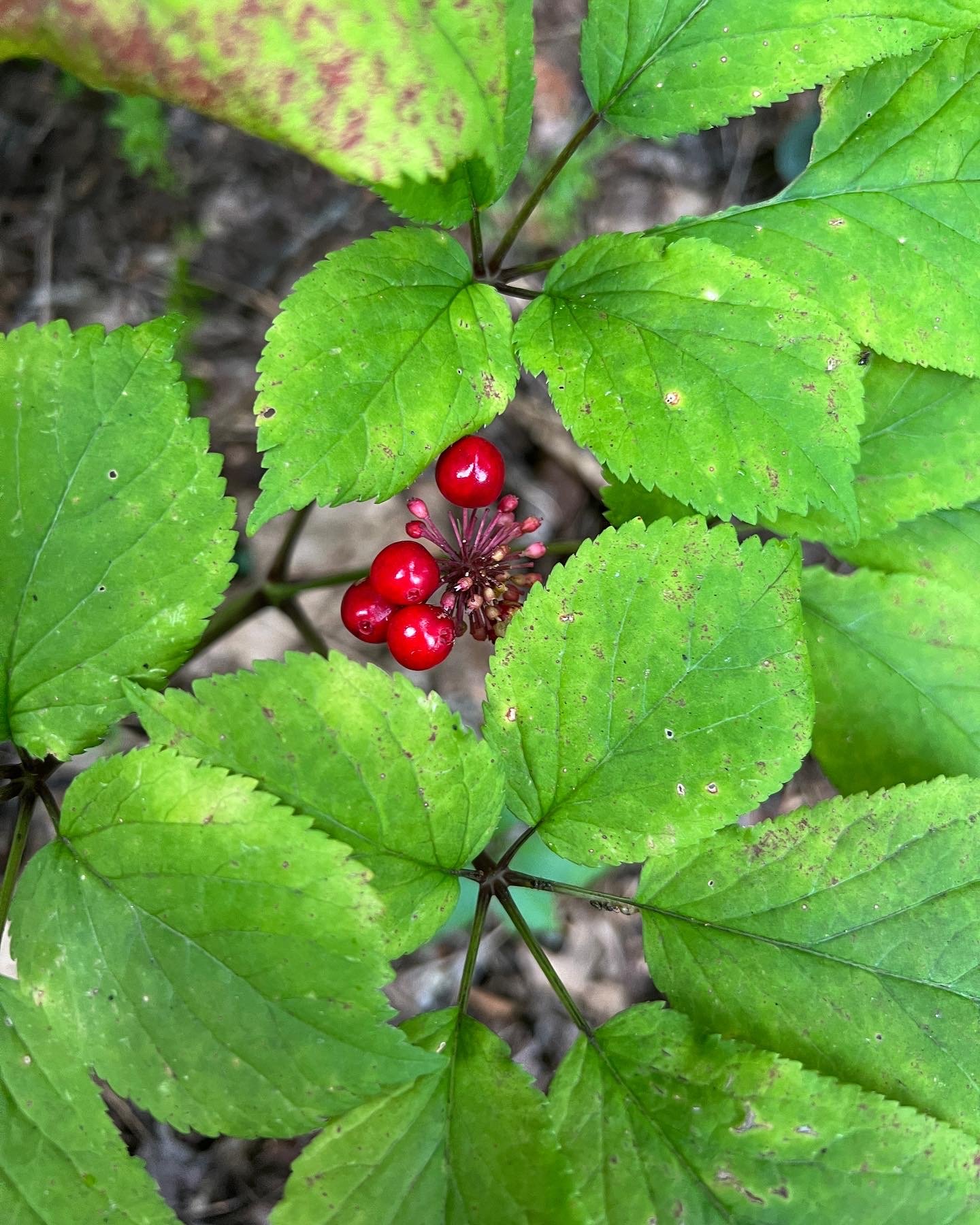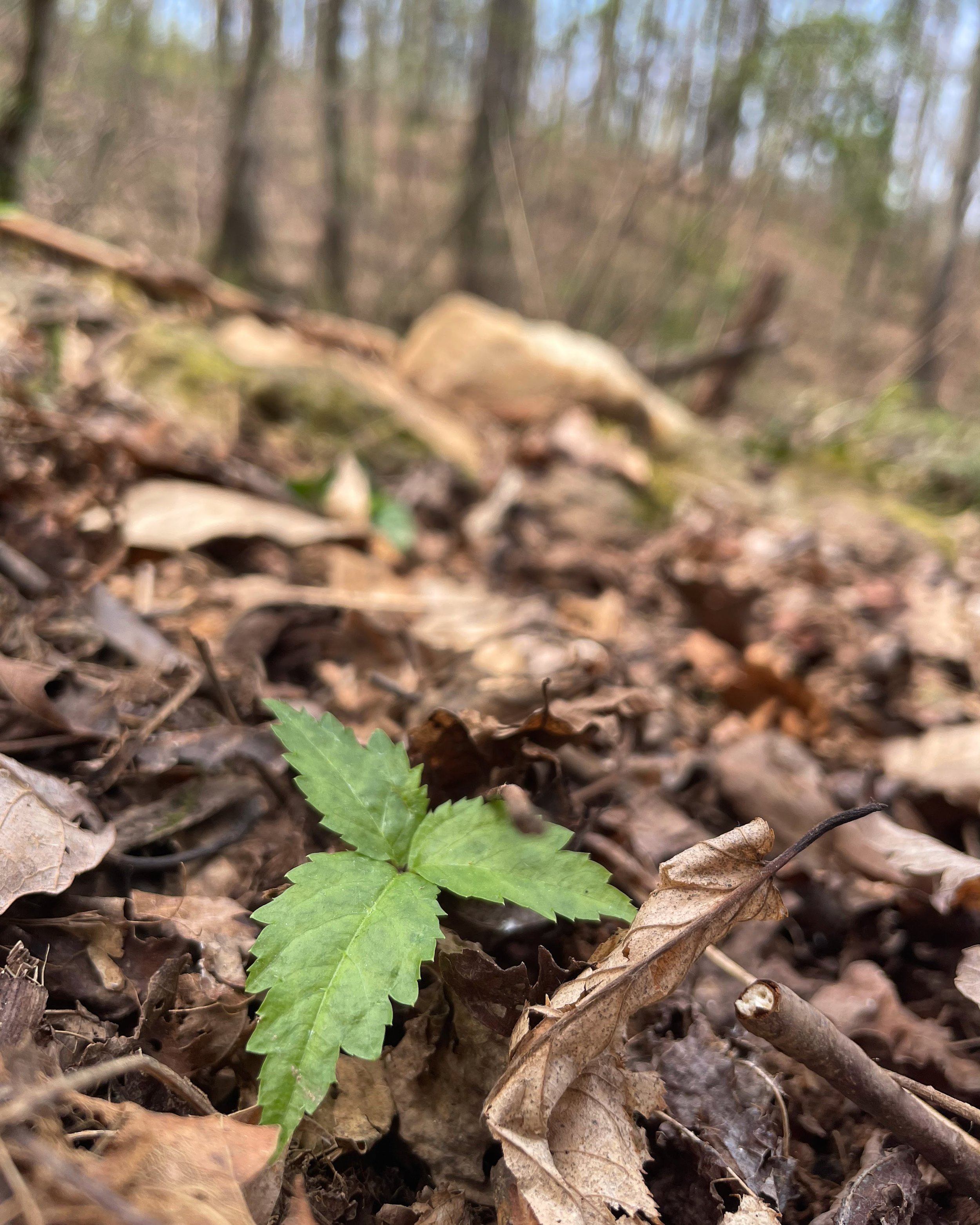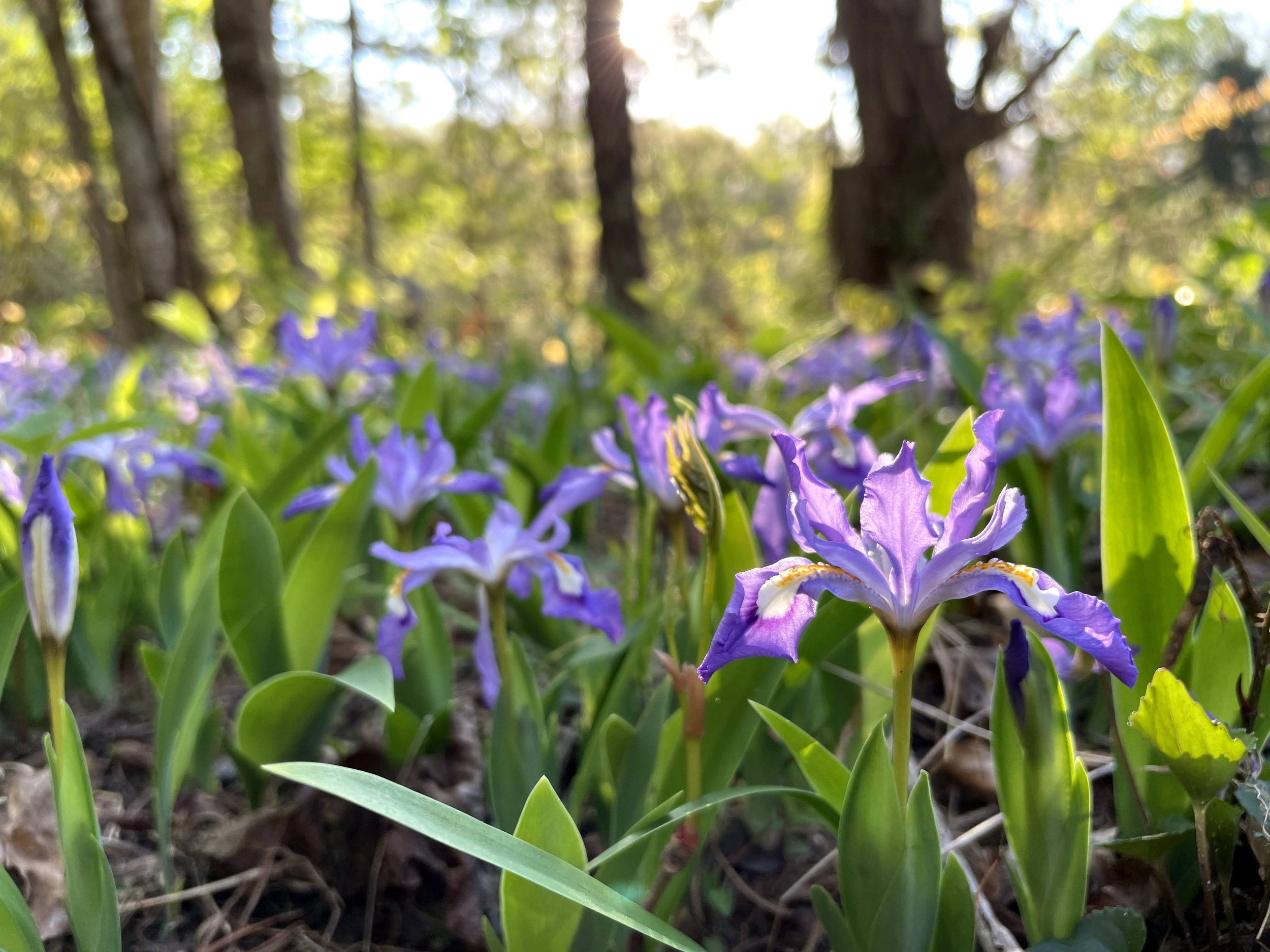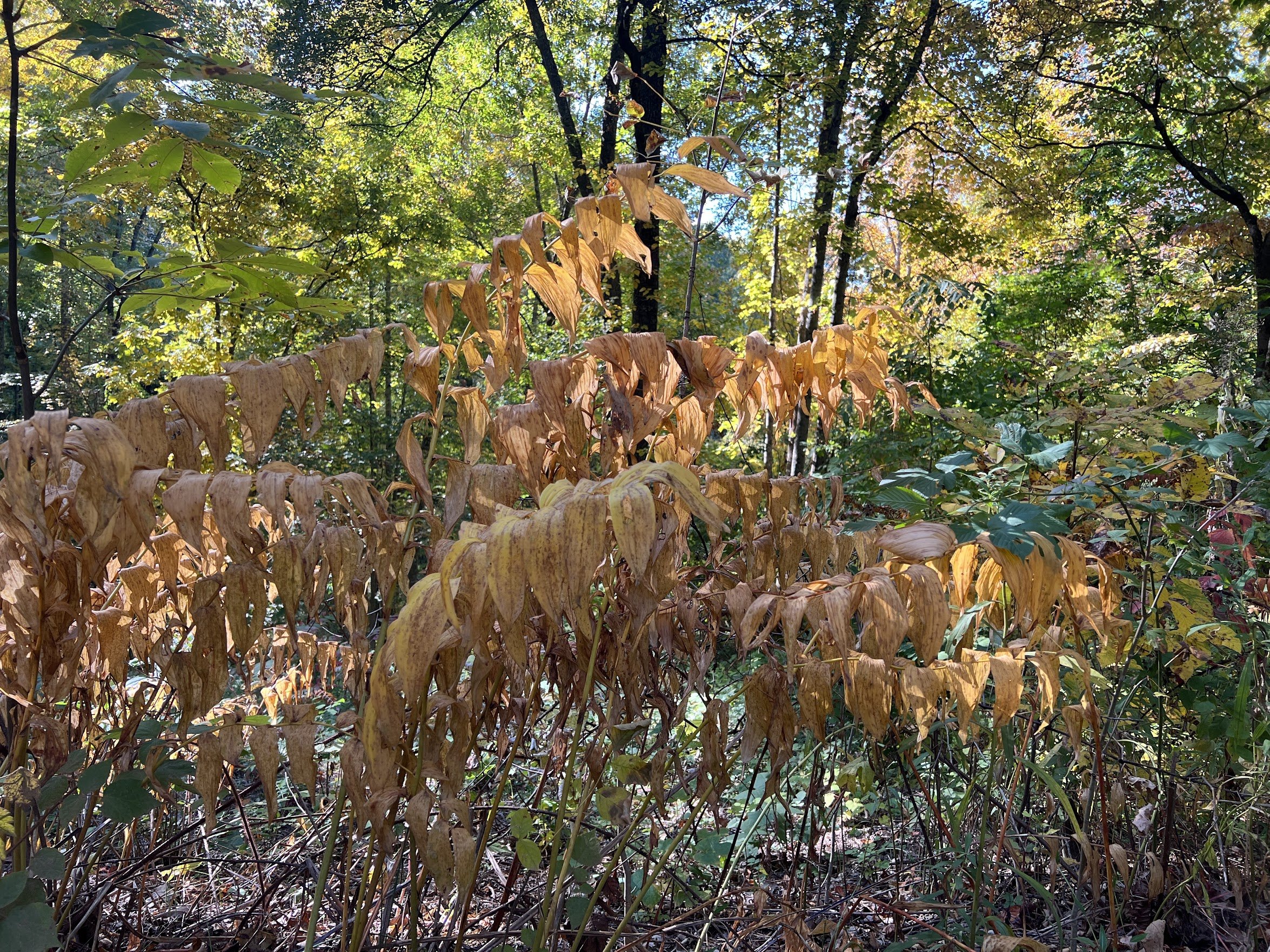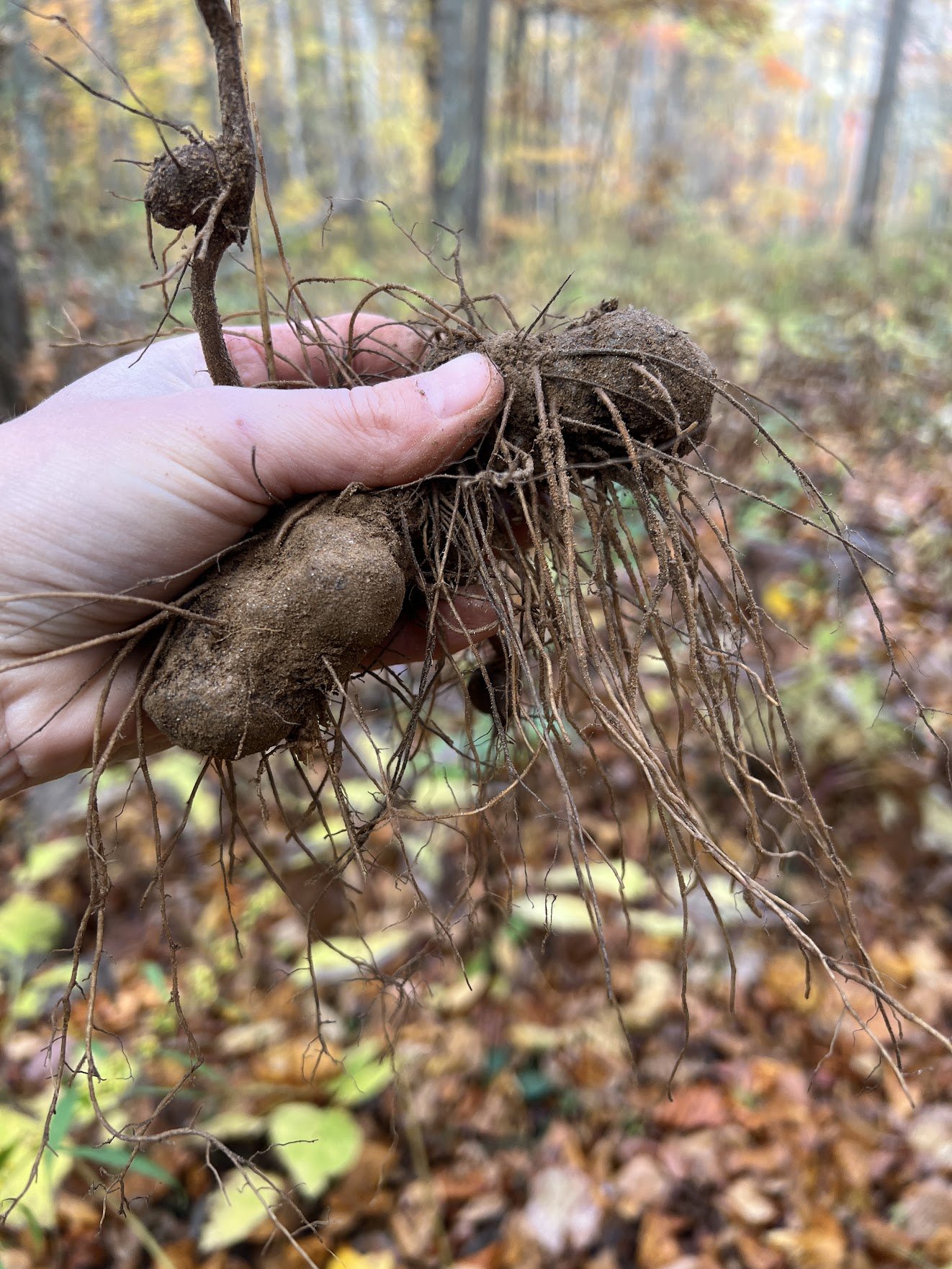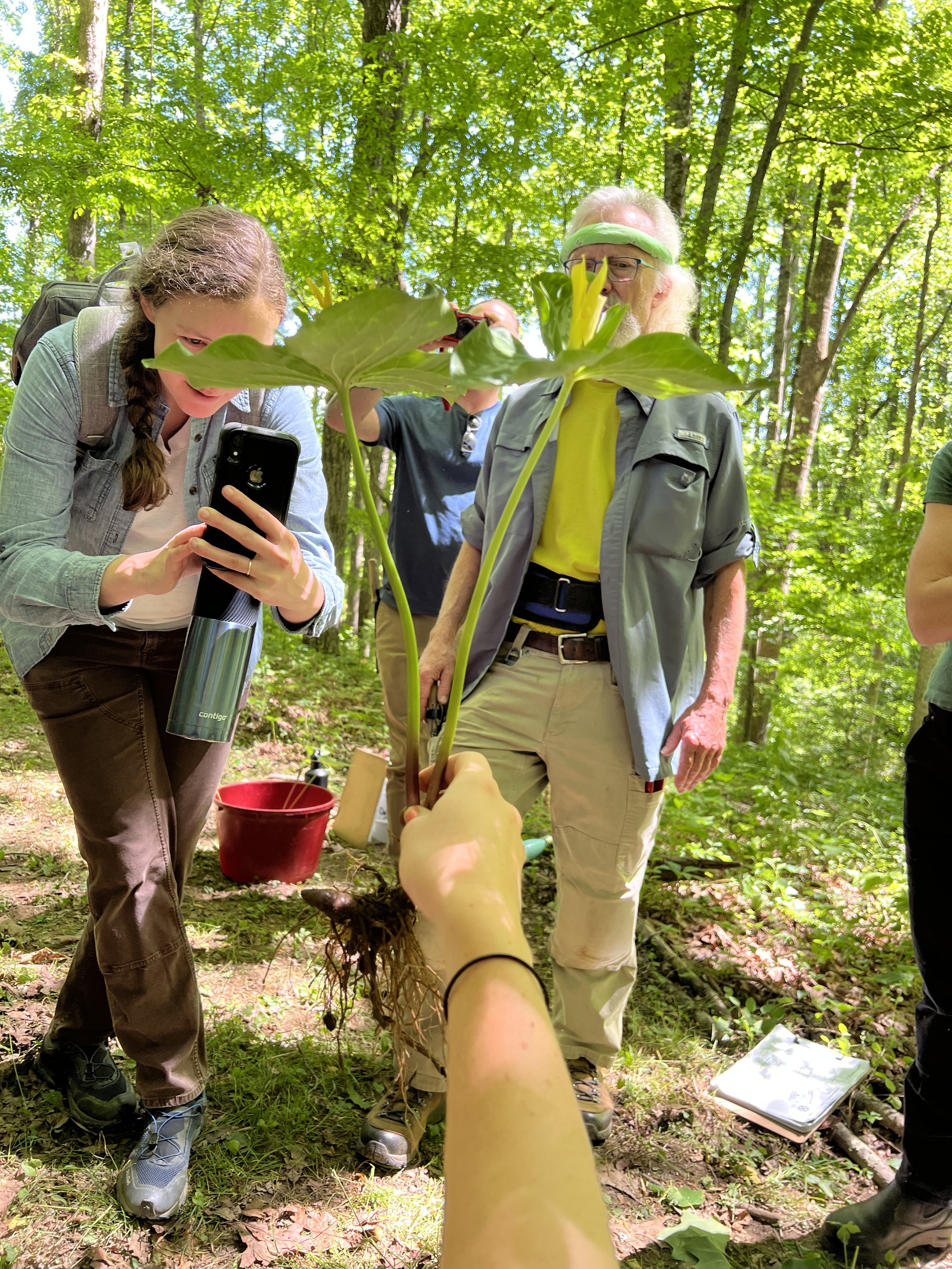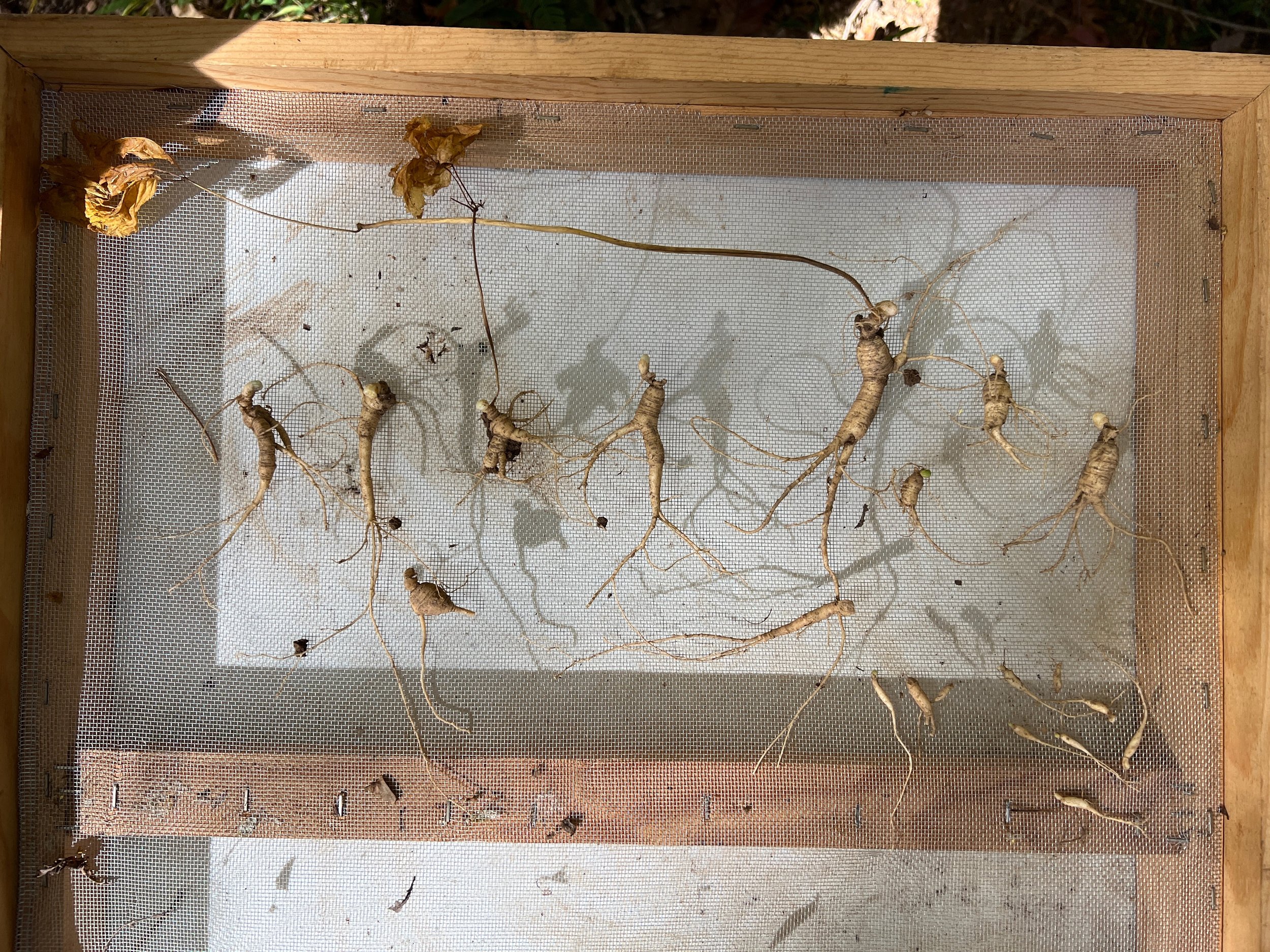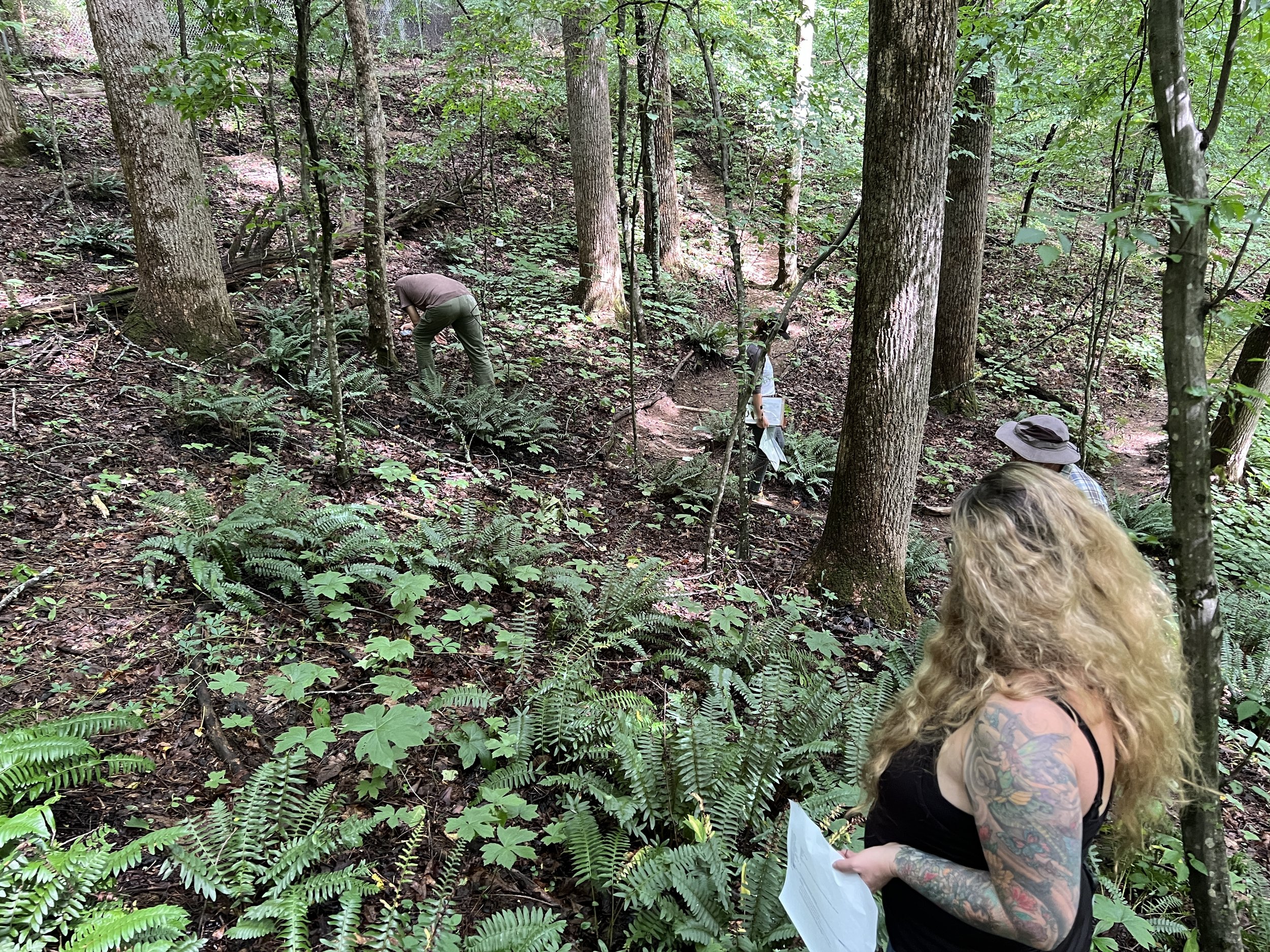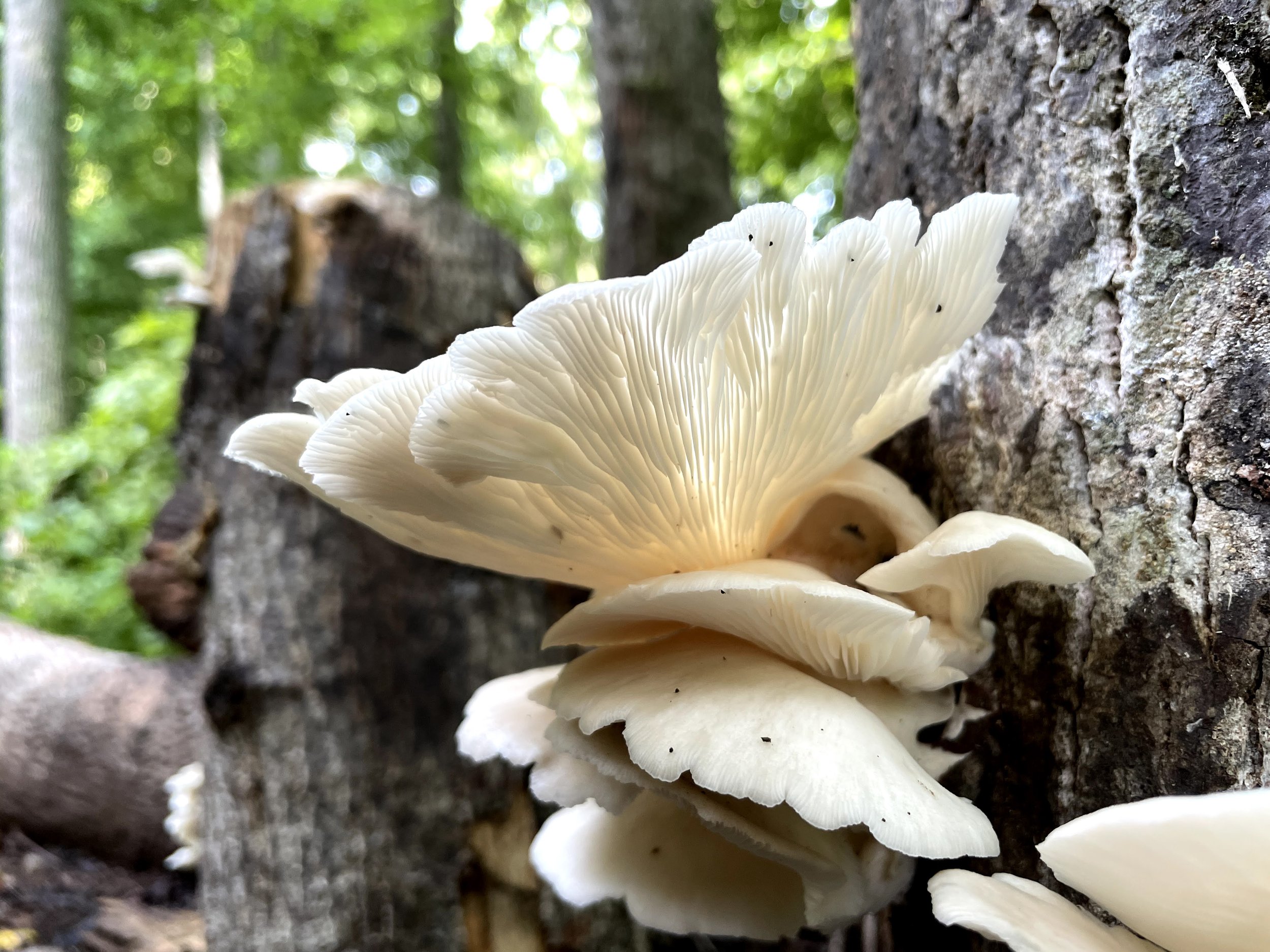Matt and I have been experimenting with mushrooms for a few years now and we’re slowly learning what works best for us here. Last year we got some nice flushes of Oysters in September and late October, as well as our first Chestnuts, and a lone Shiitake.
Warm Blue Oyster Pleurotus ostreatus
(past their prime) September 20th, 2024
We’ve been ordering our spawn from Mushroom Mountain in GA for a couple of years now, and I picked up some sawdust spawn and tools from them last spring at the Organic Growers School Spring Conference, allowing us to start using the sawdust instead of the wooden dowels. It’s more cost effective, easier, and we’ve had better success with it, so it seems like it was well worth the small investment.
Here are the steps we took to inoculate this last batch (winter-early spring of 2024), which we got some mushrooms off of (Oysters and Chestnuts) in the fall of the same year. We only got that one Shiitake so far, but I’m hopeful we’ll see more of them later this year.
First we cut down our tree(s). This year we harvested a small Oak that was going to get hit by a dead standing White Ash when we cut it down (we have the Emerald Ash Borer here in WNC, decimating our Ash populations leaving huge, dangerous dead trees in their path). We also took some limbs from a number of Tulip Poplar trees. We like using the log cabin method of stacking so we measure each piece so they will stack nicely.
I use my Instant Pot to melt my jar of wax, that way I can just put the jar of wax away when we’re finished and get it out the next time we’re doing this and get it pre-heating (I like to start the wax at least an hour before we’re starting to drill holes). I generally use beeswax but that’s just because I can get it easily locally. It’s definitely not the most cost effective wax to use. I believe many people use cheese wax, soy wax or paraffin.
After plugging and waxing we soaked these logs for a bit since they were on the dry side and there was no rain coming for a few days. This soaking may have been the difference since these logs did better than any we’ve innoculated before.
Things we learned this year'-
Warm season Oysters get eaten up fast by little insects. They’re great to have around for personal use but they would be tricky to get to market looking good, so I may focus on cool season Oysters and other species of mushroom from now on.
Soaking after inoculation is a good idea if you’re in a dry spell.
Sawdust spawn is faster, cheaper and easier to use
The fancy drill bit is worth the investment.
Mushroom inoculation is so fun, and what’s even more fun is when you go for a walk and find them fruiting!

























